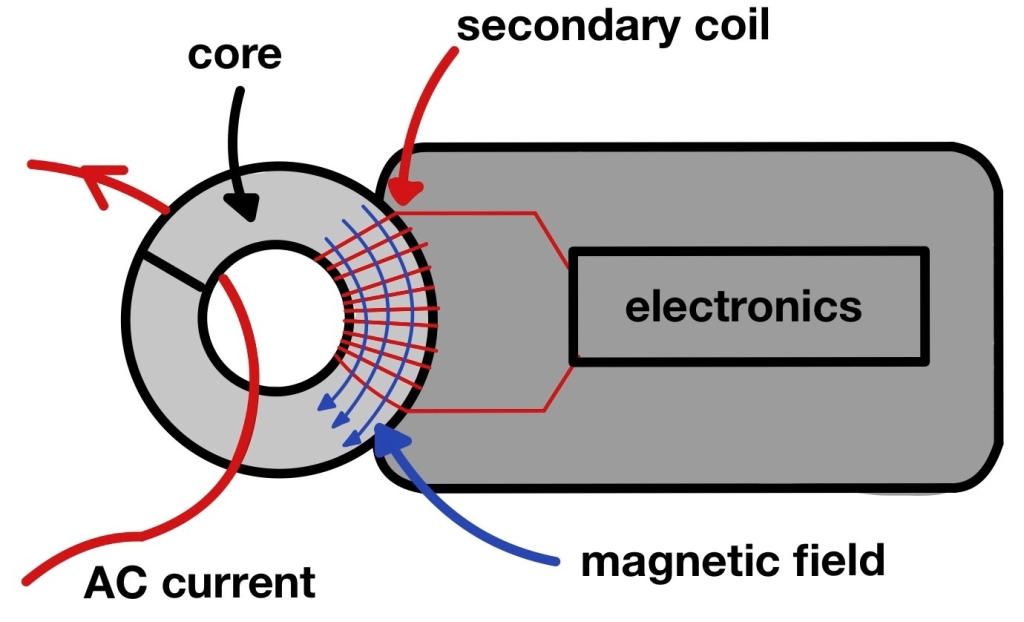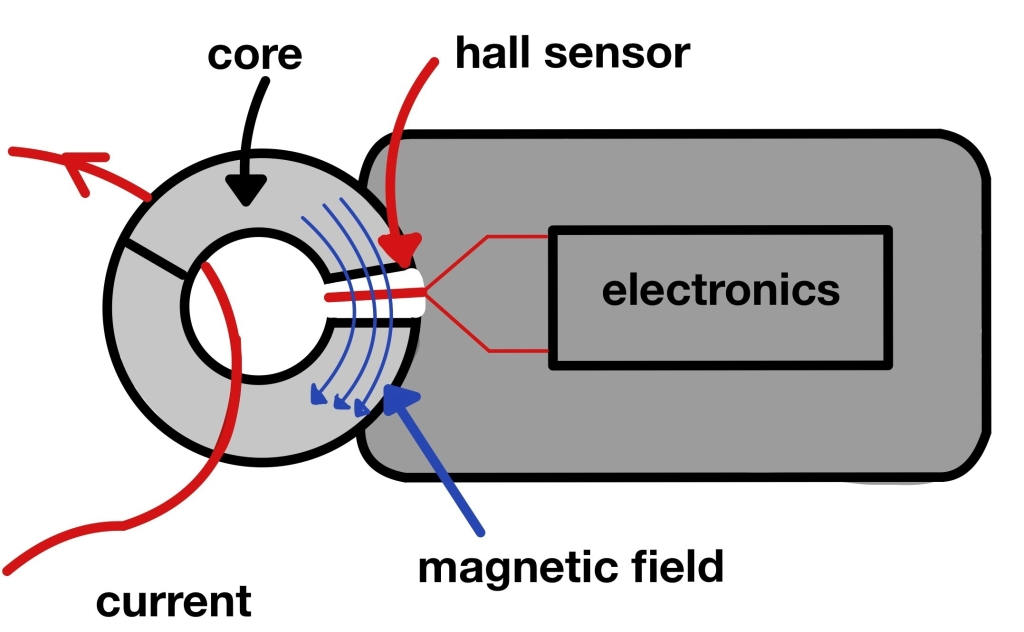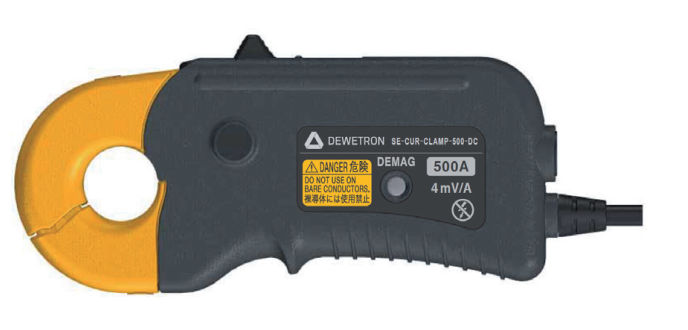Current clamp

In addition to electrical voltage and power, the electrical current is the most important parameter in electrical engineering. However, when one tries to measure current, problems arise because direct measurements require that one inserts a measuring device into the circuit. This can not only falsify the measurement result and cause safety risks, but is often not possible in the first place. For example, if you want to know how much current is flowing in the power cable leading to your refrigerator, you cannot simply cut the cable in half to insert a measuring device in between. This would of course damage the power cable and causes the food in your refrigerator to expire.
To meet these circumstances, there are so-called current clamps. They can measure the current without contact and without breaking the circuit. The following paragraphs explain what types of current clamps are available and how they work.
AC current clamp
One often makes a distinction between two types of current clamps, AC and DC current clamps. AC current clamps, as the name suggests, can only be used for measuring alternating current. This is due to their principle of operation, which is the same as that of a current transducer. Strictly speaking, AC current clamps are actually real current transformers, with the primary winding consisting of only one turn – the power cable to be measured.
The following figure shows the structure of an AC current clamp:

Working principle for measuring AC current
The operation is as follows:
- The current in the power cable generates a magnetic field around the cable. This is Ampère’s Law and a basic law of nature.
- Now one encloses the power cable with the circular current clamp. Since the core of the current clamp consists of material with good magnetic conductivity, the magnetic field “flows” through this core.
- The “alternating” magnetic field (due to the alternating current) now generates a further current in the secondary coil (which also winds around the core). This happens according to the law of induction. The induced current is usually much smaller than the current in the cable to be measured.
- One can now measure the current in the secondary circuit as usual. In most cases, the power supply of the measuring device itself is this secondary current, so you require no further batteries or accumulators for operation.
However, important to remember is: The current clamp measures the electric current indirectly by detecting the changing magnetic field of the conductor cable. You can learn more about how an AC current clamp works in our blog post about current transducers.
DC current clamp
Unlike the AC current clamps, DC current clamps can most often measure all types of current. A conductor in which a direct current flows produces only a static, constant magnetic field. This cannot be measured by AC current clamps as they require an “alternating” magnetic field. In order to realize a DC current clamp, sensors are required that can also measure static magnetic fields. Hall sensors belong to these.
You can see the structure of such a DC current clamp with a Hall sensor here:

Working principle for measuring DC current
As you can see, the Hall sensor is placed in a gap in the magnetically conductive core. As a result, the magnetic field flows directly through the Hall sensor.
Problems and drawbacks
As already mentioned, current clamps are used for indirect, contactless and safe measurement of current. However, as with almost everything in life, also current clamps have their drawbacks. For example, while current clamps are very useful for measuring a single cable, they provide incorrect results when measuring multiple cables at the same time. For example, if two power cables with opposite current direction are intertwined, the result of the measurement will be 0 A. But why?
The answer is this: Both conductors generate a magnetic field, but opposite currents also generate opposite magnetic fields. Thus, the magnetic fields of both currents cancel each other out and the current clamp (which encloses both power cables) determines a current of 0 A.
Of course, there are also special current clamps that can measure several conductor cables simultaneously. However, these are usually very expensive and also rather inaccurate.
Current clamps are also available in a wide variety of measuring ranges. There is hardly any upper limit. Typically they have a measuring range of up to 600 A, but values in the four-digit range are also possible. The only limit is downwards because the magnetic field then becomes very weak.
Current clamps at DEWETRON
Are you looking for complementary sensors for your measuring system? Then you have come to the right place. DEWETRON is a manufacturer of highly accurate and above all modular measuring systems. In addition, we offer a wide range of sensors, including current clamps.
The current clamps we provide are universal DC current clamps and can therefore be used for DC as well as AC. They have an inner diameter of 20-50 mm. With a measuring range of up to 1000 A, an accuracy of 0.3 % and a recommended frequency range of up to 1000 kHz AC, they are the perfect choice for a wide range of applications.

Current clamp from DEWETRON
Our DEWETRON measurement and test systems, including all-in-ones, mainframes and front-ends, are the perfect match for your new current clamp. With a wide variety of TRION(3) DAQ boards you can adapt the system to your own needs. For example, our TRION(3)-18xx-POWER-4 DAQ boards are perfect for current clamps.
You can learn more about DEWETRON on our website. There you will find whitepapers and webinars in addition to other blogposts. We are also regularly active on Twitter and LinkedIn.
*** Visit us at the PCIM in Nuremberg at booth 6-243 and see live OXYGEN and our data acquisition systems. Contact us for your free ticket ***





